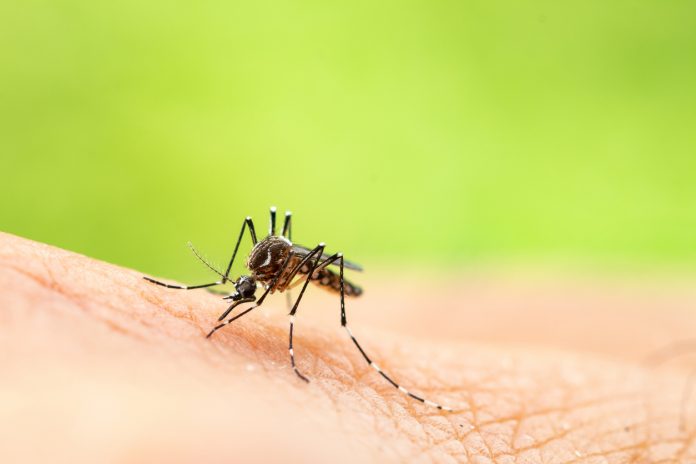Now is the time to invest in trans-national control strategies to stop the spread of neglected tropical diseases and limit suffering, say Jake Mathewson and Ente Rood, Epidemiologists at KIT Royal Tropical Institute.
Neglected tropical diseases, or NTDs, affect up to 1.6 billion people globally annually. Yet, these diseases are so under-reported, under-researched, and under-represented in countries where they are not endemic that the word ‘neglected’ has become a part of their title.
They are neglected for several reasons. Firstly, they affect the poorest communities with the least access to healthcare. Secondly, diseases like schistosomiasis can be hard to pronounce, which surprisingly can affect advocacy and awareness for them. And most importantly, they receive a fraction of the funding other infectious diseases, like HIV/AIDS and tuberculosis, that are prevalent in the global north receive.
The good news is that many NTDs are largely preventable and can be treated through highly effective drugs that often only require one dose. However, in under-resourced areas like Sub-Saharan Africa, which carries the largest burden of NTDs in the world, controlling their spread has proved to be an enormous challenge.
What are the factors driving these shifts?
Many of these NTDs are transmitted through vectors, insects or animals that carry pathogens and transmit diseases to humans. These vectors, like the mosquito, are inextricably linked to environmental conditions. Increased temperatures, precipitation, and flooding brought on by climate change are expected to accelerate and exacerbate the spread of NTDs.
Moreover, it is anticipated that the transmission period and geographic range of many NTDs will infringe on previously unaffected regions and populations while also allowing NTDs to re-emerge where they were previously eradicated.
To compound this problem, climate change is expected to shape the scale and nature of human mobility in the coming years. Mobile populations play an important role in how NTDs and other diseases disperse and emerge. People moving from regions where the disease is not endemic might be exposed to infectious diseases for which they have limited immunity, or they could introduce new infections into previously unexposed populations.
While climate-epidemiological models predict that the transmission of some of these diseases will decrease (across tropical Africa), transmission is expected to expand into areas where temperatures are currently too low. Shifts in the endemic regions of these diseases are not merely theoretical but have already started to play out across warming Europe and North America.
In 2023, the earth’s hottest year on record, cases of locally acquired dengue virus, a mosquito-borne neglected tropical disease, began to emerge in France, Italy, and Spain. These were transmitted by a mosquito not historically endemic in these areas, the ‘Aedes albopictus’. Furthermore, this mosquito has the potential to carry several other diseases, like Zika and chikungunya viruses, as well as yellow fever, a deadly disease against which most Europeans are not vaccinated.
How can we respond to them?
Recognising that many of these diseases will have the potential to affect new geographic areas in the age of climate change is an important first step. But even more essential is how we respond to that information.
Following the COVID pandemic, considerable awareness has been raised of the importance of health security and pandemic preparedness. Many high-income countries have increased spending on strengthening surveillance and early warning response systems, which is a good start. However, it is not enough to reduce the spread of infectious diseases. By simply strengthening their own surveillance systems, these countries are ignoring the situation in lower-income settings where over a billion people continue to suffer from neglected diseases.
The best way to reduce the reach and transmission of NTDs is to treat as many infected individuals as possible through a large-scale distribution of medicines across endemic areas called mass drug administration. In many cases, this form of treatment is the best preventative strategy for reducing the spread, and it also helps to reduce the likelihood that infected people will develop diseases that can lead to disability and death.
So, we must accelerate and expand access to healthcare and preventive medicines to individuals in low-resource settings to control these diseases in the settings where they are currently endemic before they spread to new ones.
A call for integrated action and increased funding
It will require substantially more funding for chronically under-resourced disease control programs in low-income countries. Furthermore, many NTD control programmes can only operate through intermittent donor funding from a mosaic of organisations with agendas that are not integrated into the routine activities of the respective health ministries. This can cause interruptions to disease control activities like mass drug administration and allow the continuity of control efforts to fall victim to shifting political agendas and funding priorities. This structure will have to change to allow for more sustainable integration of NTD programmes into health systems in low-income countries.
Finally, public health professionals will have to develop better strategies for forecasting, identifying, and targeting communities at the highest risk of these diseases to ensure a more efficient use of the limited resources.
With these steps, we can begin to reduce the devastation of NTDs in populations currently affected while reducing the likelihood of more wide-scale transmission to newly endemic areas. Perhaps with climate change affecting us all, there will be a greater awareness of the risks of emerging diseases that will help to spark a new wave of solutions. Until then, there is much work to be done.https://www.openaccessgovernment.org/the-shifting-burden-of-neglected-tropical-diseases-in-the-age-of-climate-change/176417/
Jake D. Mathewson
Ente J.J. Rood
Bipasha van der Zijde
KIT Royal Tropical Institute
https://www.kit.nl

